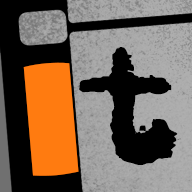Or distributors? Would a 1.84:1, have a better chance of being picked up, then say a 2.35:1, or 1.77:1 one? Or does it not really matter much? What if a filmmaker shot a movie in an unusual one like 2.55?
Last edited:

No matter which Aspect ratio you shoot in, you'll have to produce for standards as well: Broadcast namely. 4:3, 16:9, etc.
Keep that in mind when you go to shoot.
I will probably always shoot and crop in post from now on unless there's a massive budget.
That's a freebie, one you don't learn until you have to deal with a thing called deliverables.
So yeah, aspect does matter. xD
I think it matters in that you need to be aware of what the final format needs to be. I'm cutting in 2.4:1, but will be able to easily throw that into a 16:9 sequence when I go to do a blu-ray or DVD export. I think it's more important to shoot as close as you can to your desired display ratio so you lose as little resolution as possible -- for instance, shooting 4:3 and cropping down to 2.4:1 is generally going to be a bad idea.
How will I loose resolution? Maybe I'm doing it wrong, but what I am doing is removing a strip of the picture, off the end. Some shots, I have to take a strip off the top, some the bottom, some both. Depends on the shot. The resolution stays the same, just a strip is missing, or at least I thought it stays the same.
Basically 16x9 for television (with 4x3 safe zones)
1.85/1 for comedy or DTV movie
2.4/1 for blockbuster, sci fi, or epic type movies, also higher end dramas such as historical epics.
2.4/1 provides the most horizontal scope and cine feel, but does not convert as well for television as a 1.85/1
Depends what you want

What is your intended output format (TV, Internet, theaters?) That will help you answer that question. Too many filmmakers start with script, then move forward. After the script, if you work backwards from your eventual release, you'll have a much clearer picture of what you need to shoot.
This is a great list.
I was shocked at just how much more professional my footage looked merely by cropping to 2.4: 1.
I like your approach, knightly.


